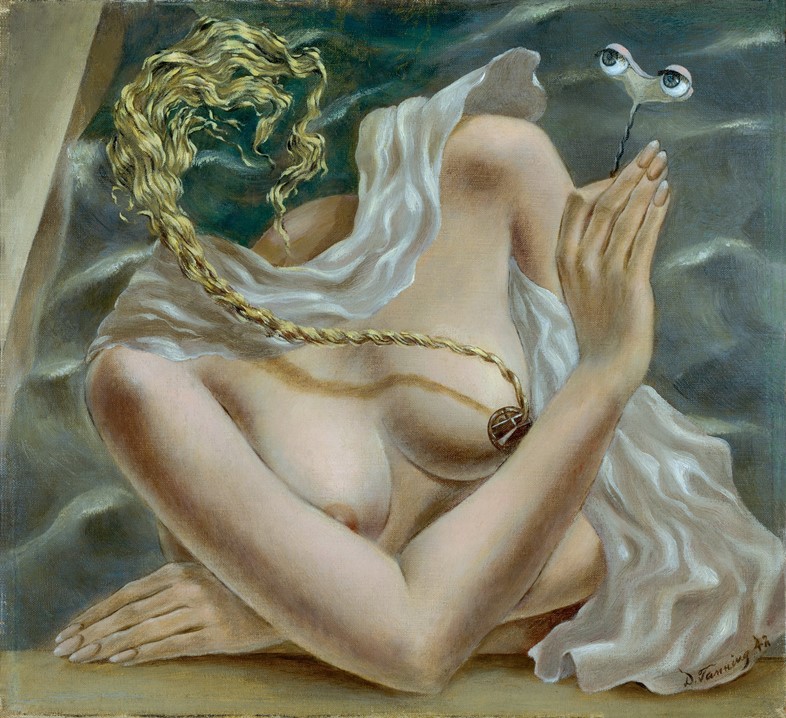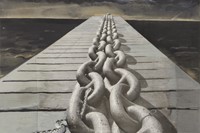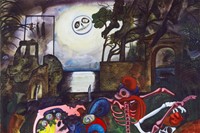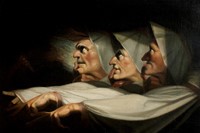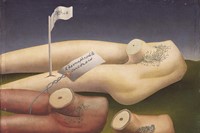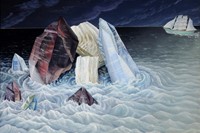To coincide with two current exhibitions on the movement, we celebrate ten of surrealism’s most singular pioneers, who used painting, photography, film and sculpture to flip reality on its head
Surrealism – that seminal artistic and literary movement led by French poet André Breton – has continued to inspire creative minds in every realm ever since its Paris heyday, which lasted from 1924 up until World War Two. The Surrealists sought to upend what they viewed as the oppressive rationalism engulfing modern society by tapping into the sur réalisme (superior reality) of the subconscious – an idea propelled by psychoanalytic writings of Sigmund Freud. In his Surrealist Manifesto, Breton called upon his fellow artists to plumb the uncharted depths of their imaginations to achieve new, uninhibited modes of expression – be it hyper-realistic renderings of their dreams or abstracted “automatic” drawings that transcended conscious thought.
Before long, artists across the globe were putting their own spin on the concept, from Belgian artist René Magritte’s array of mysterious figures, their faces obscured by apples, bones and cloths, to Frida Kahlo’s stunningly evocative blend of realism and fantasy told in the language of Mexican folk art. Here, to coincide with two current exhibitions on the movement – British Surrealism at Dulwich Picture Gallery and Fantastic Women at Schirn, Frankfurt – we remember ten of our favourite Surrealist artists who worked across different media to flip reality on its head, interrogating society’s staid beliefs along the way.
1. Dorothea Tanning
Groundbreaking American artist Dorothea Tanning discovered Surrealism in 1940s New York, whereafter she met and married Max Ernst, and moved with him to France. Recently celebrated in a memorable and long overdue Tate Modern exhibition, Tanning’s art “tells stories which are etched into a personal universe she used to give meaning to modern life,” in the words of the accompanying catalogue; her work currently features in Fantastic Women. Whatever medium she employed – be it painting, drawing, “soft” sculpture or writing – Tanning’s aim was to enforce a transcendence of reality by presenting her audience with what she termed “unknown but knowable states”. Many of her Surrealist-era paintings show dishevelled female figures in domestic settings, depicted in a state of sensual reverie, to subvert gender expectations, while others take the more traditional route of assembling mismatched objects into strange still-lifes, to no less intriguing, or disquieting effect.
2. Gertrude Abercrombie
Although she cited René Magritte as a key inspiration, American painter Gertrude Abercrombie was largely responsible for developing her own brilliant and beguiling brand of Surrealism in the far-flung environs of 1930s Chicago, where she was known affectionately as “Queen Gertrude” among her fellow artists and musicians (she was close friends with Charlie Parker and Dizzy Gillespie). Abercrombie’s esoteric works boast a refined colour palette of dusky pastels and an array of recurring motifs, from owls, cats, moons and ethereal figures, to houses, stairways and doors. “I am not interested in complicated things nor in the commonplace, I like to paint simple things that are a little strange,” she once declared in a revelatory statement. “My work comes directly from my inner consciousness and it must come easily.”
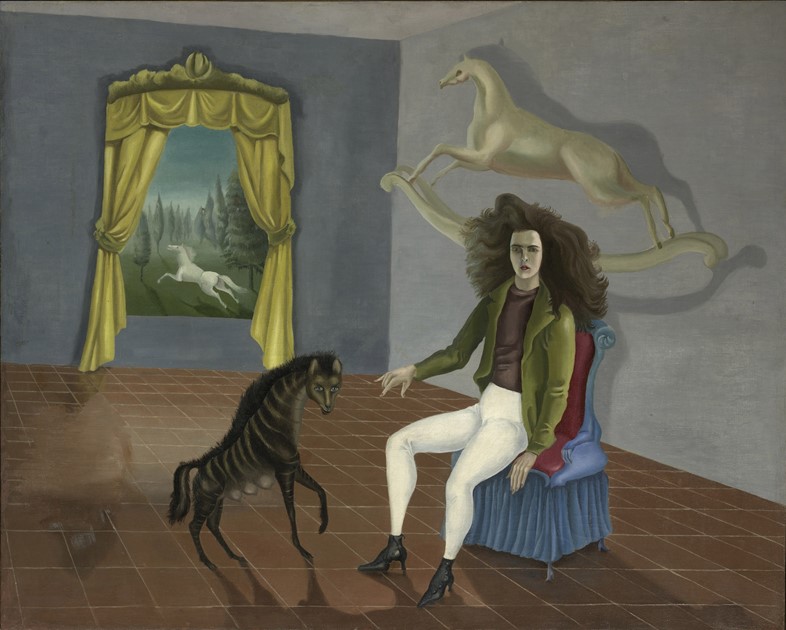
3. Leonora Carrington
One of the most important woman Surrealists, British artist Leonora Carrington fell in with the movement after meeting a number of its members in London, during an exhibition of their work in 1936. Thereafter, she forged a romantic relationship with Surrealist mainstay Max Ernst, sparked by their shared obsession with the language of dreams, which Carrington explored extensively through both painting and sculpture. Carrington – who emigrated to Mexico following a painful break up with Ernst – rebuffed the Surrealist ideal of woman as the ultimate muse, instead looking to the animal world, the occult, and Celtic mythology for inspiration, with singular results. “You may not believe in magic but something very strange is happening at this very moment,” she once said, in a quote that betrayed her whimsical world view. “Your head has dissolved into thin air and I can see the rhododendrons through your stomach.”
4. Salvador Dalí
Spanish artist Salvador Dalí is one of the first names that springs to mind at the mention of Surrealism, partly because of the madcap mythology that surrounds him – he is said to have eaten copious amounts of camembert before bed to prompt vivid dreams, kept a pet ocelot, and claimed that his inimitable moustache was an antenna for receiving alien signals. But while the painter, sculptor and photographer was hugely influenced by – and, later, influential to – the movement and its symbolism (with his fondness for eggs, melting clocks and ants), he was a latecomer to the Surrealist group.
When Dalí and his friend the filmmaker Luis Buñuel (see below) collaborated on the wildly imaginative (and violent) short film Un Chien Andalou (An Andalusian Dog) in 1929, they shot to fame among the European avant-garde. Dalí relocated to Paris the same year and the Surrealists eagerly embraced him. Like them, he drew heavily on Sigmund Freud’s psychoanalytic studies, but while the rest of the members were staunchly left-wing, Dalí preferred to remain a-political – a point of contention, which saw him break with the group irreconcilably in 1939.
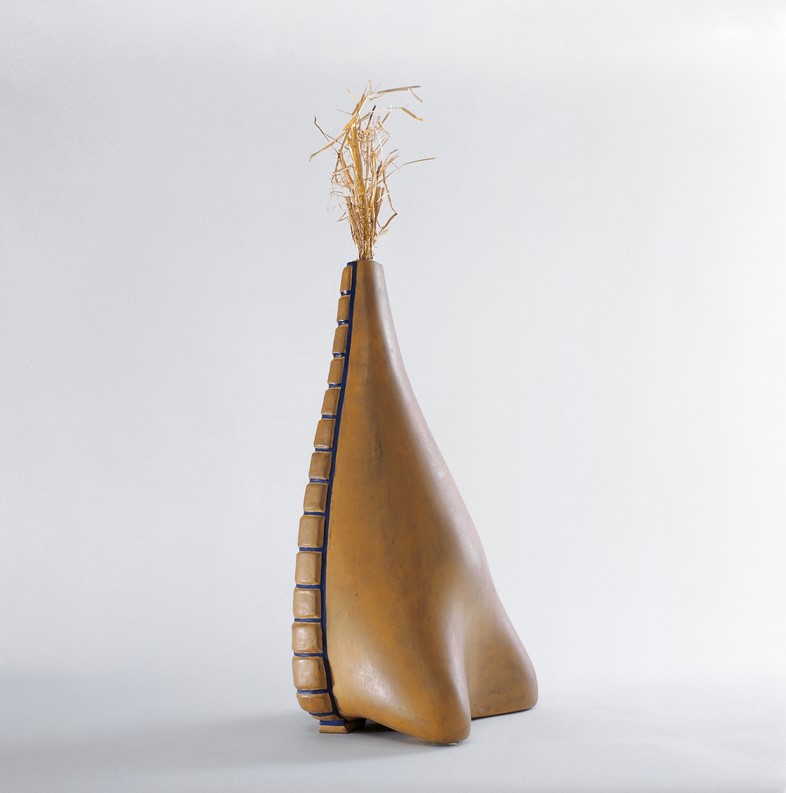
5. Méret Oppenheim
German-born Swiss painter and sculptor Méret Oppenheim is best known for her gazelle fur-covered teacup, replete with matching saucer and spoon – an indeilble emblem of surrealism and feminist art alike. Titled Object, the 1936 work is typical of Oppenheim’s distinct approach, which saw her confront the subjugation of women and interrogate fixed ideas of femininity through the use of everyday domestic objects (across both her chosen media), which she frequently imbued with erotic undertones. Equally central to her work was the connection between dreams and reality, and she was duly scooped up by the Surrealists while living in Paris, after posing for Man Ray’s Erotique voilée in 1933, later dabbling in Dada too.
6. Alberto Giacometti
Although most associate Swiss sculptor and painter Alberto Giacometti with the spindly bronze figures he produced after World War II, he was in fact an important pioneer of Surrealism in his youth, after being befriended by André Breton. Similarly intrigued by the chasms of the subconscious, Giacometti fell into easy step with Breton’s group, and between 1930 and 1935 created a series of striking, psychologically-charged sculptures that he claimed to have conjured up with his inner-eyes prior to their realisation. These include two of his major works Point to the Eye (which sees a sharp tusk, teetering on a metal pin, lurch towards the eye socket of a similarly elevated featureless face to “incite active, if only imaginary, participation”, in the words of a 2001 MoMA catalogue) and Cage (which presents the viewer with an abstracted caged figure to explore the darker emotional implications of romantic love).

7. Claude Cahun
The forward-thinking French photographer, sculptor and writer Claude Cahun was born Lucy Schwob but adopted her better-known, gender-neutral nom de plume in 1917. Her gender-bending self-portraiture photography, which saw her adopt a variety of different personas – from dolls and dandies to weightlifters and pilots – made an immeasurable impact on the medium, going on to inspire artists including Cindy Sherman, Gillian Wearing and Nan Goldin. Cahun was a valued member of the Surrealist group – André Breton described her as “one of the most curious spirits of our time” – and exhibited in the Surrealist show at Galerie Ratton in 1936, but her work remained largely forgotten about until the 1980s, when it was rediscovered and celebrated for its bold challenge to preconceived notions of self-identity. “Under this mask, another mask,” she famously said. “I will never be finished removing all these faces.”
8. Man Ray
“I do not photograph nature. I photograph my visions,” proclaimed Man Ray, one of the few American artists to have played a vital role in both the Surrealist and Dada movements. Born Emmanuel Radnitzky, he adopted his pseudonym in 1909 while living in New York. There, he met and befriended Marcel Duchamp – a major influence upon his radically experimental work, who would later induct him into the Surrealist milieu when he relocated to Paris in 1922. Another important acquaintance was the American photographer and gallerist Alfred Stieglitz, who introduced Man Ray to image-making – the medium for which he is most widely celebrated. His unique flair for portraiture and fashion photography saw him achieve unprecedented commercial success, and is instantly distinguishable thanks to the pioneering technical developments the artist employed, including solarisation and his Surrealist-approved, self-titled ‘rayographs’ (or photograms).
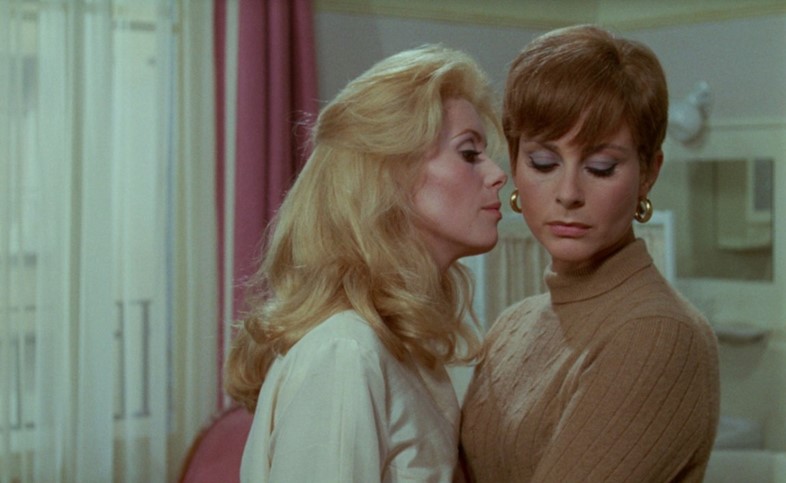
9. Luis Buñuel
Luis Buñuel was just as nonconformist as his good friend Dalí – the revered filmmaker is said to have attended the premiere of his aforementioned debut Un Chien Andalou with pockets full of stones to throw at the audience should they take offence to its overt displays of eroticism and bloodshed. Instead, it was hailed a masterpiece, and marked the arrival of “an iconoclast, moralist, and revolutionary who was a leader of avant-garde Surrealism in his youth and a dominant international movie director half a century later” (to quote his obituary in The New York Times). A provocateur who delighted in challenging bourgeois notions of good taste, Buñuel remains one of cinema’s most innovative and amusing storytellers. His masterful output turned reality on its head at every turn – think: The Exterminating Angel (about a group of guests inexplicably unable to leave a dinner party) or Belle de Jour (starring Catherine Deneuve as bored housewife who takes a job as a high-class sex worker to live out her secret fantasies).
10. Marion Adnams
Derby-born artist Marion Adnams is a lesser-known gem in the realm of British Surrealism – although you might know her as the inspiration behind Stephen Jones’ elegantly eccentric Spring/Summer 2011 collection, Drifting and Dreaming. An accomplished painter, printmaker and draughtswoman, Adnams exhibited alongside fellow Surrealist artists Max Ernst and Henry Moore during her lifetime, but has only gained the acclaim she so rightly deserves in the wake of various posthumous exhibitions (her work features in current the Dulwich show). Her arresting oeuvre brings together a variety of seemingly unrelated objects (animal bones, architecture, plants and flowers) placed in mysterious, and usually outdoor, settings – to haunting, dreamlike effect, evocative of a more delicately handed Dalí.
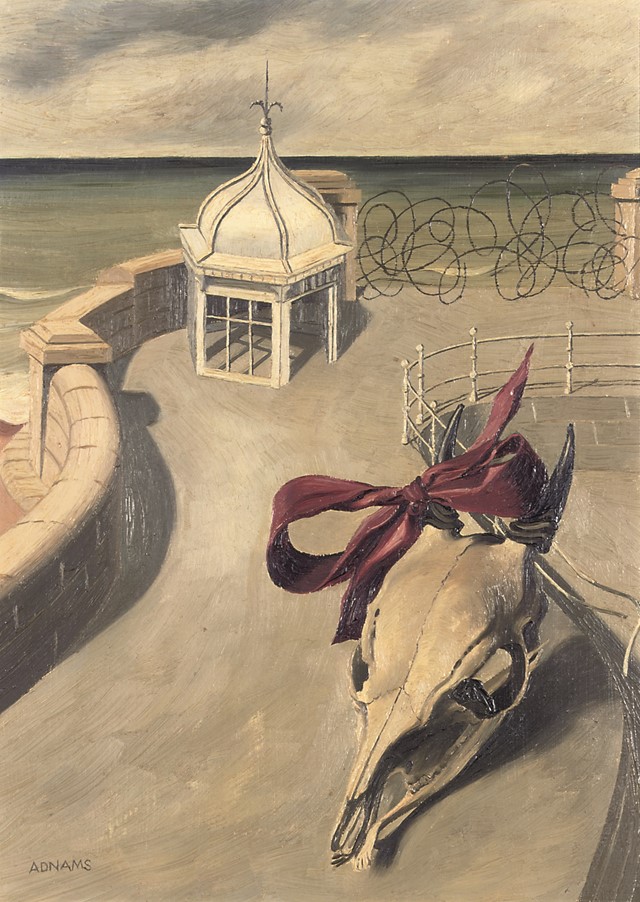
British Surrealism is at Dulwich Picture Gallery, London, until May 17, 2020.
Fantastic Women is at Schirn, Frankfurt, until May 24, 2020.
